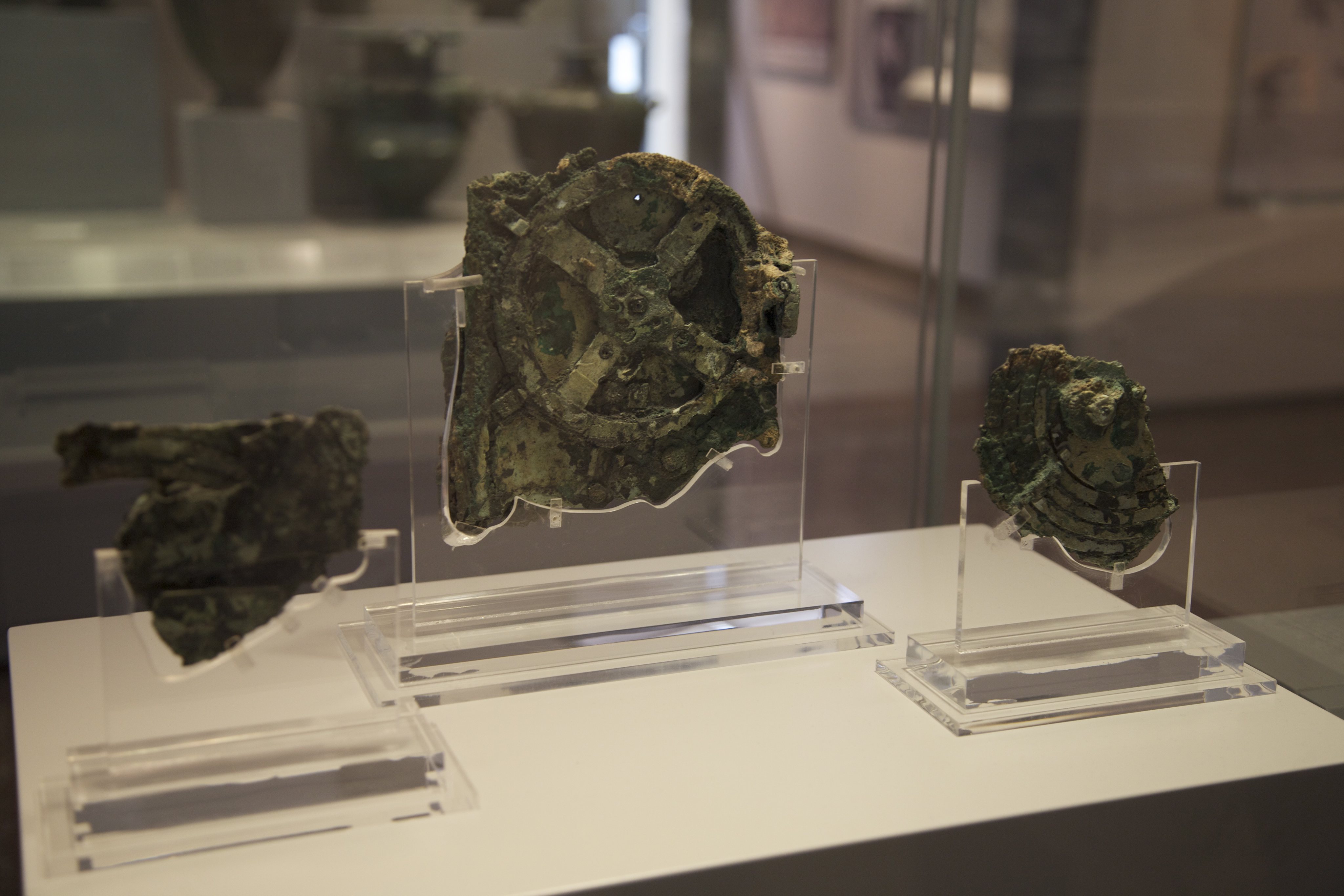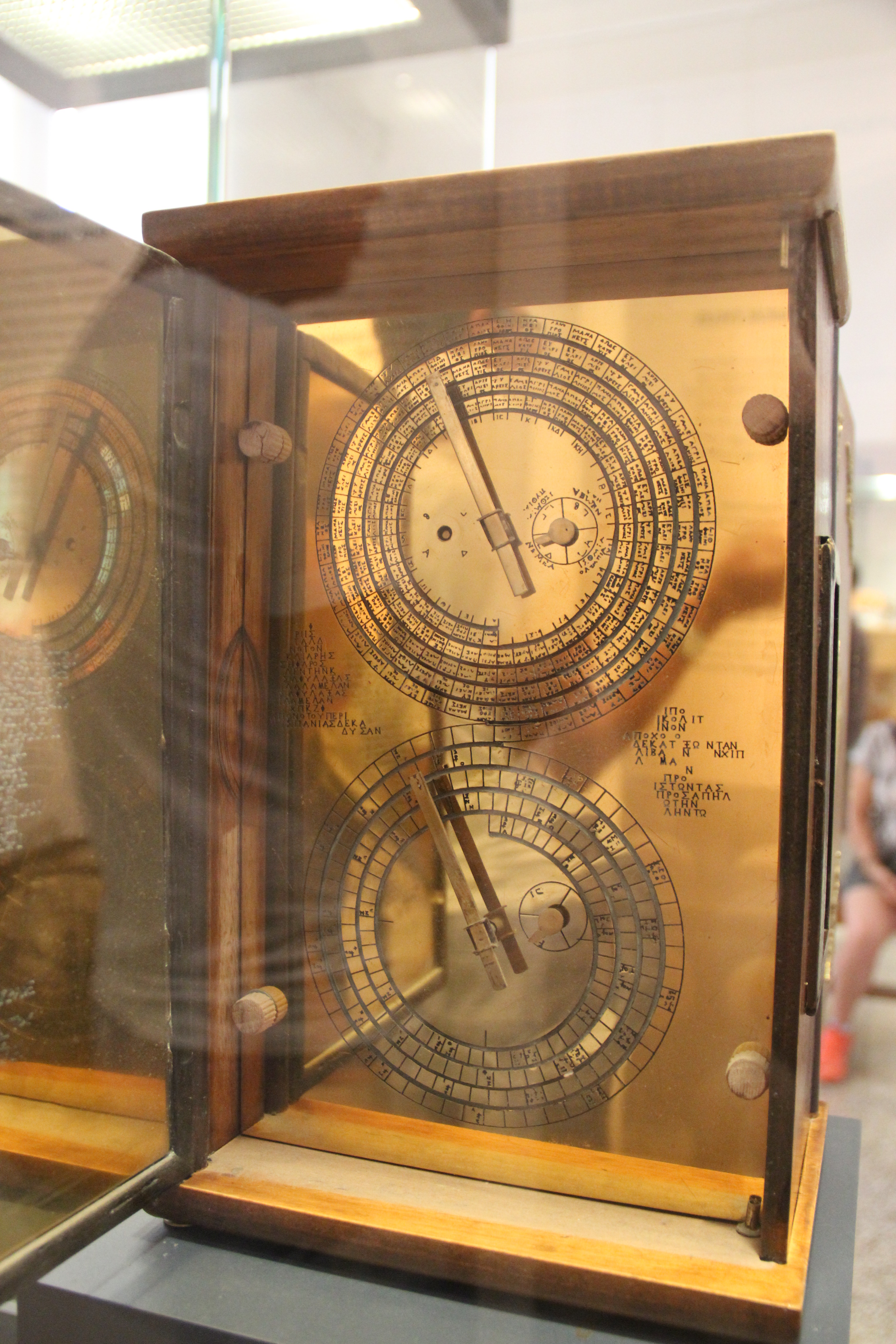The Antikythera Mechanism is a complex astronomical device composed of bronze gears, dated to the late 2nd or early 1st century BCE. Discovered in 1901 in a shipwreck off the coast of the Greek island of Antikythera, this portable-sized instrument featured front dials and rear spiral scales used to calculate the positions of the Sun, Moon, and possibly the planets, as well as the lunar phases, eclipses, and the Metonic and Saros cycles.
Modern research has shown that the mechanism operated through an intricate system of gears and is considered the world’s oldest known analog computer.
Discovery
The Antikythera Mechanism was brought to light in April 1900 when a team of sponge divers from the island of Symi, led by Captain Dimitrios Kontos, discovered an ancient shipwreck off the coast of Antikythera. The wreck, located at a depth of about 45 meters, was excavated between 1900 and 1901 with the support of the Greek Navy. Among the recovered artifacts were bronze and marble statues, amphorae, glassware, everyday objects, and a corroded lump of metal.
Initially recovered in three main fragments, the object eventually separated into 82 pieces. These fragments were transported to the National Archaeological Museum in Athens, where, on May 18, 1902, archaeologist Valerios Stais noticed gears and Greek inscriptions on one of the pieces—marking the beginning of scientific investigations into the device.
Function and Mechanics
The Antikythera Mechanism is a multifunctional astronomical instrument designed to calculate the movements of celestial bodies using a complex arrangement of bronze gears. The front dials displayed the positions of the Sun and Moon within the zodiac, the phases of the Moon, and possibly the motions of the five known planets.
The back of the mechanism featured two spiral dials: the upper dial represented the 19-year Metonic cycle, while the lower dial displayed the 223-month Saros cycle, which spans approximately 18 years and 11 days, used to predict the dates and characteristics of eclipses.
Through a system of gears with eccentric pins and slots, the mechanism simulated the varying speed of the Moon in its elliptical orbit, effectively modeling the lunar anomaly described by Hipparchus. When the side-mounted crank was turned, the interconnected gears activated the corresponding indicators, providing synchronized astronomical data for a selected date.
Additionally, subsidiary dials allowed for the determination of the dates of Panhellenic games, while inscriptions on the protective plates offered detailed instructions on the device’s functions.

Antikythera Mechanism (flickr)
Reconstructions and Models
The complex structure of the Antikythera Mechanism has inspired numerous reconstruction attempts since the mid-20th century. In 1929, Greek naval officer Ioannis Theofanidis attempted to build a model of the device but was unable to complete his work. More significant progress was achieved through the X-ray studies and interpretations of Derek de Solla Price, followed in the 1990s by Michael Wright, who identified the mechanism’s spiral dials and pin-and-slot system and successfully produced functional bronze replicas.
After 2001, advances made by the Antikythera Mechanism Research Project, using high-resolution imaging techniques, allowed for more accurate reconstructions. As a result of these studies, in 2002, Wright developed a planetarium model that included all five known planets, and in 2012, a team from Aristotle University produced a full-scale 1:1 bronze reproduction of the device.

Bronze Model (flickr)
Finally, in 2021, Tony Freeth and his team constructed a functional replica supported by modern data, bringing the mechanism back to working condition for the first time in more than 2,000 years.


